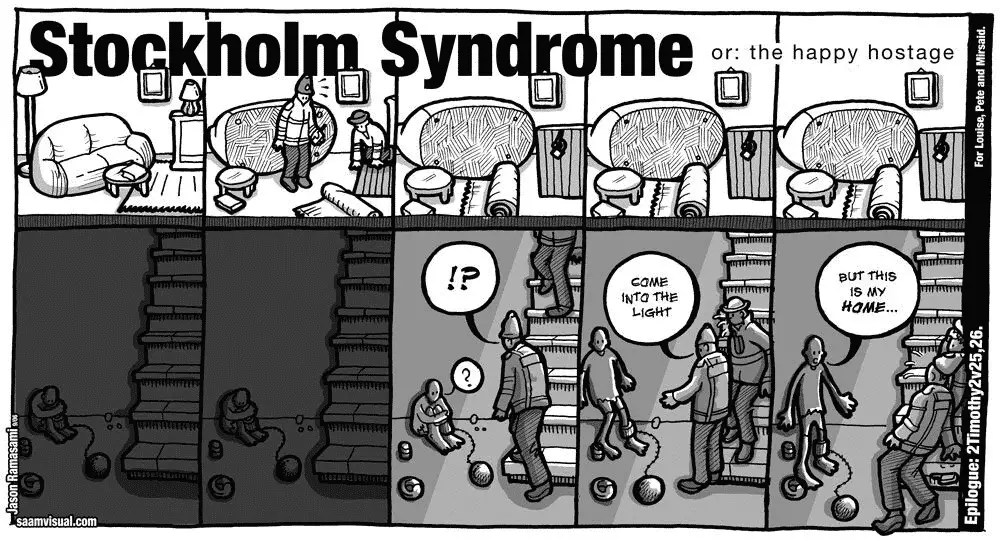This situation forces hostage to form a friendly or psychological alliance with their captors. The alliance is because of the affectionate bond developed while the captivity lasted. Some people considered it a form of a survival strategy.
When they are free from captivity, they still kept that bond. This bond could not have been possible if there were a good relationship established between them. Many people do not understand the rationality of that relationship, because of the difficulties the victims passed through. Such people will not hesitate to declare such a relationship as a psychological disease.
The term was coined and used for the first time in the year 1973 when four bank workers in Stockholm Sweden who were held hostage by bank robbers defended their captors after they were arrested and taken to court. Instead of providing the authorities with evidence that helps them to jail their hostage takers, they decided to defend and refused to testify against them in court.
Stockholm syndrome is not the best type of relationship because it is considered a paradoxical sentiment, which these victims had for their captors. This is the opposite of what society feels about these captors. At least four key elements can characterize this kind of relationship and they are as follows:
- There is no previous relationship that exists between the captors and their victims
- The victims develop a positive feeling or mercy toward their captors when they were in captivity
- The victims will refuse to cooperate with the authorities, especially the police and the court in dealing with the captors
- The hostage now has a positive feeling and sympathetic feelings for their captors on the humanitarian ground. The reason the victims decide to show mercy for their captors is for a reason that is best known to them.
Some experts have considered such a situation as a contested illness because the legitimacy of such sympathy is in doubt.
This concept is widely used because of the growing number of people who subscribe to that kind of behavior. Some of them include kidnap victims like Patty Hearst in the year 1974. Other victims such as Elizabeth Smart exhibited the same syndrome in 2002.
Stockholm syndrome does not affect all the victims of the hostage attack in a comparable situation. Several factors could be responsible for that. Here are some of the factors that could lead to the syndrome.
When the crisis lasts for longer days more than expected. During the crisis, the hostage takers were in contact with the refugees. This means that they were not separated. Furthermore, during the period of captivity, the hostage takers show sympathy with their victims by refusing to make things uncomfortable for them. If their captors abused them, they will not develop that kind of attitude towards them.
Furthermore, many people confronted by that kind of situation can do anything to remain safe and not to be harassed afterward. Research also indicates that those suffering from this kind of syndrome often have the same symptoms as patients with Post Traumatic Stress Disorder PTSD.
Some of the symptoms they can share together are nightmares, insomnia, concentrating difficulty as well as general irritability. Such people could be easily startled, and they are often confused. Such people often do not trust others.
Examples of Stockholm syndrome
Here are some examples of Stockholm syndrome:
Mary McElroy
This is a classic example of this syndrome. At the age of 25 four men took her into a hostage in the year 1933. She was chained in an abandoned house for days. When she was released, she refused to collaborate with the investigators claiming that those men were only businessmen. Even when they were found guilty and imprisoned, she continued to visit them in prison.
Natascha Kampusch
This is another victim that developed Stockholm syndrome for her captor who treated her in different ways. She was captured at the age of eight in the year 1998. The kidnapper committed suicide; she adored her and kept his picture in her wallet. There are several other examples.
Treatment
Many psychologists have recommended that the same kind of treatment given to the victims of PTSD. They maintained that the treatment should be extended to patients of Stockholm syndrome since they share almost the same symptoms.













